Categories
Subjects
Authors
Artists
Venues
Locations
Calendar
Filter
Done
July 26, 2022 – Review
Tony Cokes’s “Fragments, or just Moments”
Harry Burke
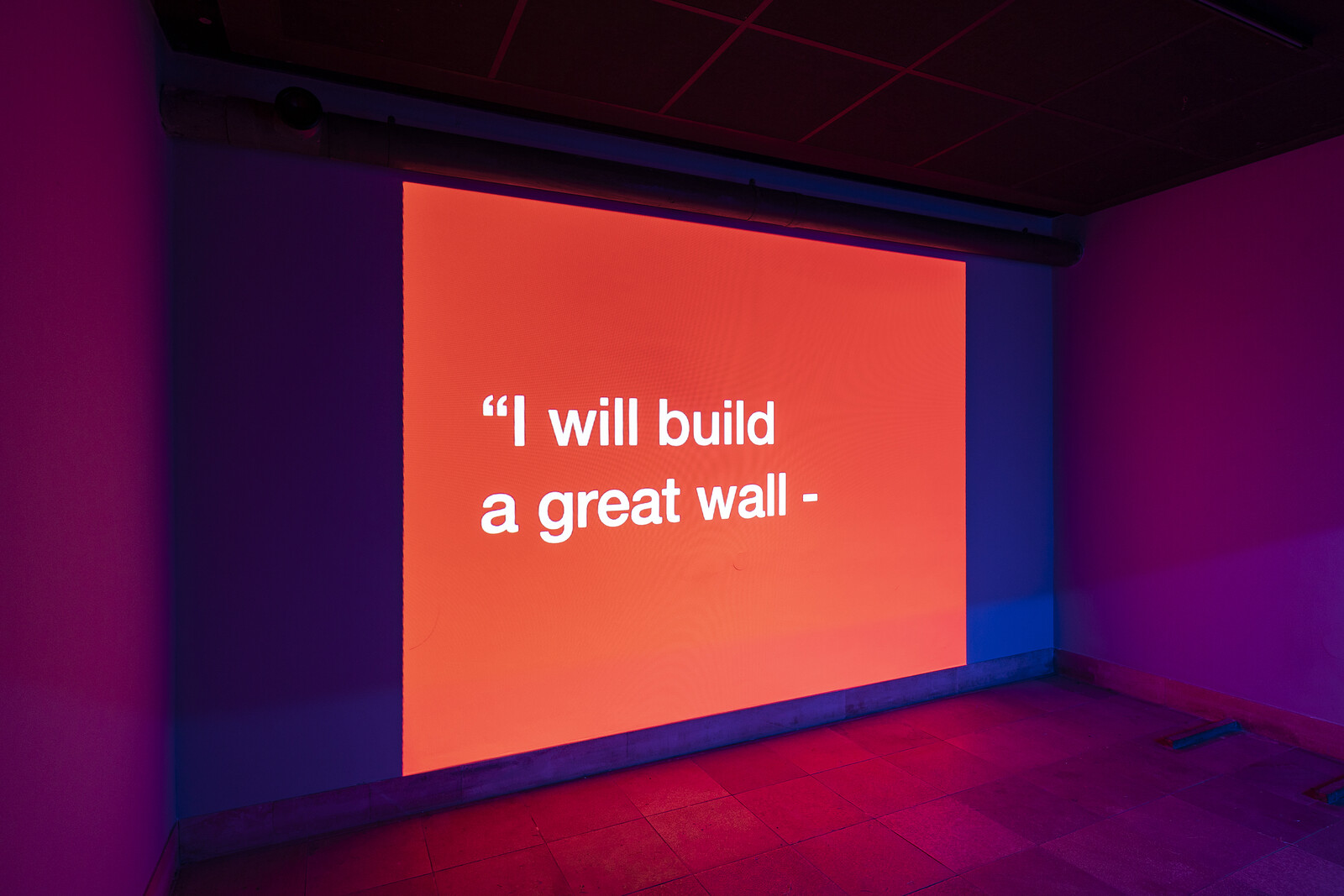
Walking into “Fragments, or just Moments” at Haus der Kunst is like walking into a club. Blue lighting animates the subterranean LSK Gallery, while atmospheric techno—the audio of Tony Cokes’s Some Munich Moments 1937–1972 (2022)—thuds in the corridor. The effect is uncanny, not least as the bunker was formerly an air raid shelter created by the National Socialist party—as three shower cubicles by the entrance, among other eerie details, testify.
In this retrospective, which spans this venue, the Kunstverein München, and two public sites, Cokes stages a haunting conversation with Munich’s past. 1937 is the year that the Haus der Kunst, designed by Hitler’s “master builder” Paul Troost, opened its doors. In 1972, the city’s Olympic Games, which West Germany hoped would repair its international standing, were overshadowed by the murder of eleven Israeli athletes by affiliates of the Black September Organization, a Palestinian militant group. In the postwar years, Germany undertook a determined program of de-Nazification, and today is reckoning with its colonialism.
In a change of tune from Cokes’s celebrated text animations of the last two decades, which mostly shun representational imagery, Some Munich Moments (different edits of which appear at each venue) features scenes of a comprehensively …
April 14, 2020 – Review
Sung Tieu’s “Zugzwang”
Chloe Stead
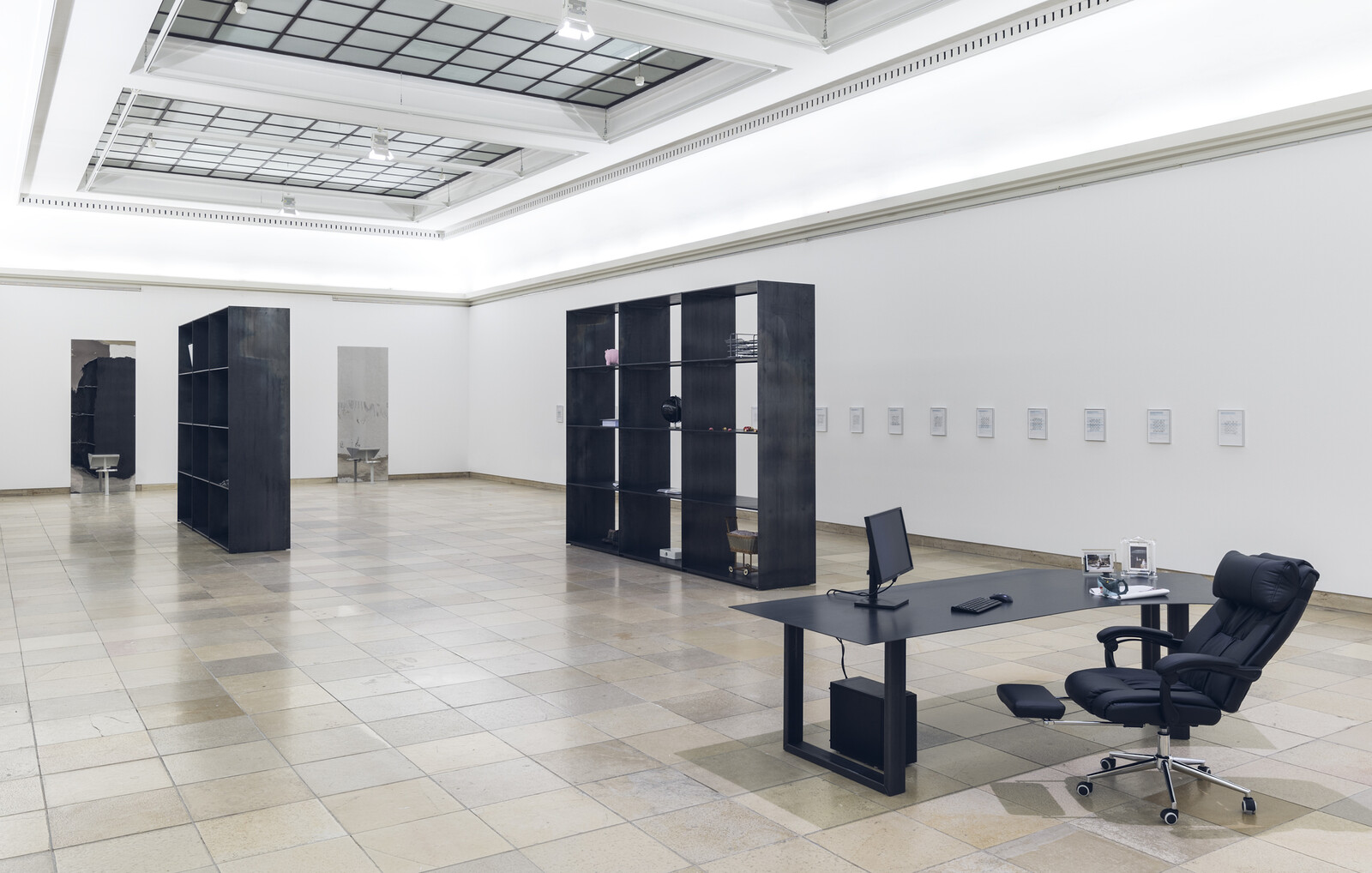
“Zugzwang” describes the situation in turn-based games, such as chess, when the compulsion to move puts a player at a disadvantage. In Sung Tieu’s solo exhibition at Haus der Kunst, this becomes a metaphor to describe the asylum process, which compels applicants to provide authorities with information that may later be used against them. Tieu is no stranger to this system. Born in Hai Duong, Vietnam, in 1987, she immigrated to Germany with her mother in the early 1990s, and is now based in London and Berlin.
This experience is indirectly referenced in a set of 31 replicas of official forms (Alekhine’s Defence, all works 2020) that stretch across two of the exhibition’s four walls. Relating to asylum, naturalization, and residency, each of these uniformly framed documents has been edited by the artist to remove any mention of the country where they were issued. Posing basic biographical questions alongside more subjective requests—“[Provide] factual information about the applicant’s intelligence”—these forms aim to assess the “use value” of each claimant, which is in turn balanced against the possible risks, such as ill health or possible criminal activity, which they pose. On each sheet, Tieu has drawn a move from a historic chess match …
January 24, 2019 – Review
“World Receivers”
Amelia Groom
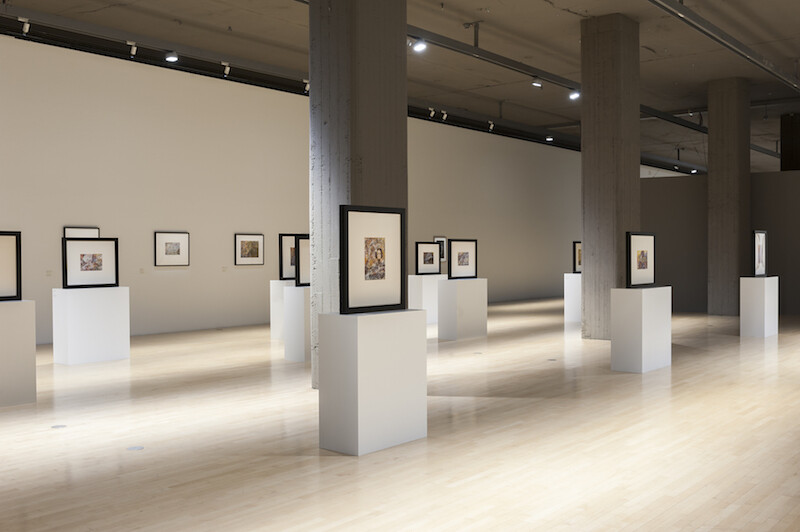
“Solar and logical / decadent and symmetrical / angels are mathematical.” Lyrics from Coil’s song “Fire of the Mind” (2005) come to me while I look at Emma Kunz’s gorgeous large-scale drawings. Kunz was a Swiss healer who began making these works in 1938, when she was 46. She had no formal artistic training, and the 500 or so drawings she made were never exhibited during her lifetime. For her, they were tools crafted as part of broader therapeutic and divinatory practices. Today they appear like a crew of decontextualized mathematical angels, as intense as they are inscrutable.
The exhibition “World Receivers” puts Kunz in the company of Hilma af Klint and Georgiana Houghton, two women who also developed abstract visual languages as part of their personal esoteric investigations—af Klint in Sweden in the first decades of the twentieth century, Houghton in England in the second half of the nineteenth. The three differ from one another in important respects, but there are intriguing commonalities, including the fact that all of them trouble the notion of autonomous authorship by posing that creating be understood as a matter of receiving. Describing her process, af Klint wrote: “The pictures were painted directly through me, …
June 27, 2018 – Review
Public Art Munich "Game Changers"
Orit Gat
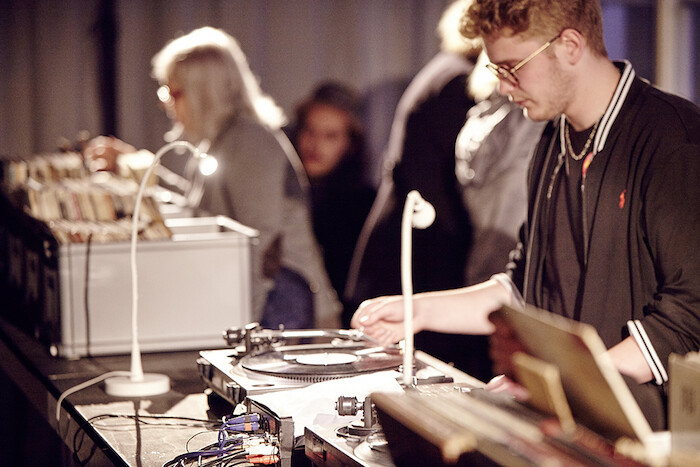
Curator Joanna Warsza titled the 2018 edition of Public Art Munich (PAM) “Game Changers,” choosing to focus the festival on 20 live events, shifting the definition of public from sites to subjects. In lieu of outdoor sculptures there are events, and in place of a map a schedule. Conceptualizing the festival, Warsza focused on three historical moments that took place in Munich: the proclamation of the Bavarian Soviet Republic in 1919 (established and disestablished within less than 30 days); the inauguration of the Olympic Stadium ahead of the 1972 games (a moment of optimism shattered when Palestinian organization Black September killed 11 Israeli athletes and a German police officer); and the welcoming of refugees at the Munich train station in summer 2015. These events are game changers, according to Warsza—short episodes that affect societies years later.
The ideologies that underlie these three events—radical politics, short-lived revolution, long-standing struggle, and the lasting aftermaths thereof—inform the commissions for PAM, which address different political, historical, and social questions from numerous angles. On the festival’s website is a glossary of terms, from “Independent Social Democratic Party of Germany” to “Relational Specificity,” “datafication,” and “countersurveillances.” It’s an ambitious framework for what is essentially a slow and …
April 12, 2018 – Review
Alexandre Estrela + João Maria Gusmão and Pedro Paiva’s “Lua Cão”
Patrick J. Reed

Watching João Maria Gusmão and Pedro Paiva’s Cowfish (2001) is harrowing. The poor fool struggles on a plate and then pukes a little water before going still. Any viewer would assume the film’s subject—a cowfish—dies, but in the end its survival remains unclear. Death is withheld by a flicker and a loop back to the start. Gusmão and Paiva prefer the contemplative over the didactic.
Compare to Alexandre Estrela, their contemporary in the Lisbon moving-image scene, who revels in combining video, sculpture, and text. His projects—some of which are included in the show, alongside those of Gusmão and Paiva—possess stroboscopic effects and hypnotic sounds that challenge conventional legibility.
Given their aesthetic and philosophical differences, it would seem the artists’ orbits opposed fruitful alignment, yet, under the auspices of “Lua Cão,” they form a rewarding trine that places their respective works in dialogue. Translated from the Portuguese as “Moon Dog,” the title refers both to an optical phenomenon, in which refracted light creates a halo around the moon, and, via a nod to the American composer Moondog (1916–1999), idiosyncratic third stream jazz—rare essences woven into a phenomenal collaboration.
Described by its creators as an “immersive moving-image experiment,” “Lua Cão” is tailored to the elegant …
May 29, 2015 – Review
“Die Marmory Show II. Impoverishment”
Jenny Nachtigall
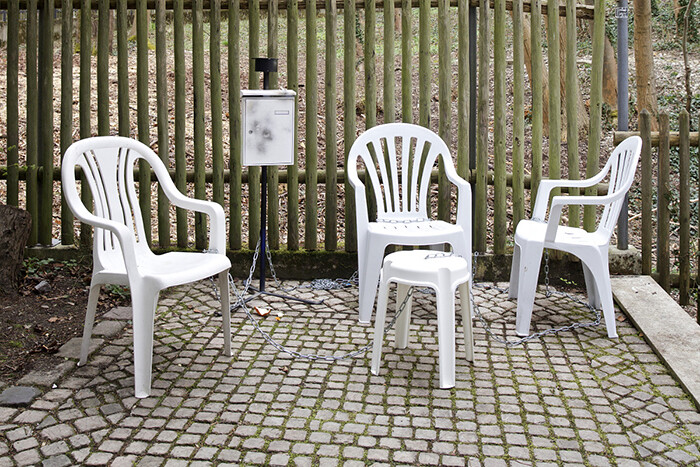
The protagonist of Fanny von Reventlow’s novel The Money Complex (1916) suffers from a pathological lack of cash. She is afflicted with a grave sickness of fetishism: money is a being with “whom” she had a very painful relationship that failed dramatically—hence her ailment and impoverishment. In the present times of crisis, the “money complex” no doubt still flourishes, and does so particularly well in the art world, which is host to all kinds of pathologies, promises, and Bohemian myths—chief amongst them the cryptic link between “talent” and success, of being discovered one day, if you only try hard enough. Subtitled “Impoverishment,” the second iteration of Deborah Schamoni’s “Die Marmory Show” departs from such questions of art-world success and its absence—though its itinerary is anything but sociological, or psychoanalytic for that matter. It unfolds within a narrative structure in which “impoverishment” alternates between material, social, or discursive registers. Spreading over the gallery’s two floors, garden, and courtyard, the exhibition that Schamoni co-curated with Nikola Dietrich includes works by Leidy Churchman, Shannon Ebner, Judith Hopf, Tobias Madison, Park McArthur, Manfred Pernice & Martin Städeli, Christoph Schäfer, Eric Sidner, and Peter Wächtler.
Its entry point is Manfred Pernice’s briefkastenOrion (verlorener posten) (2015). Located …
July 3, 2013 – Review
“it’s just a way to stay alive / Zukunftswahn”
Kerstin Stakemeier
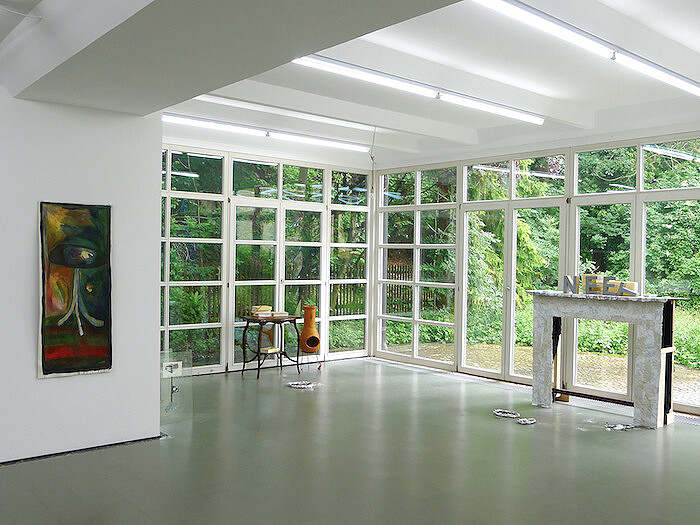
Munich is a place for long shots. It lacks Berlin’s elegantly wasted charm and it is not an international youth hostel of art. Quite on the contrary, for emerging artists or for young galleries Munich is a rough patch with its incredibly high rents and living expenses. But its haute bourgeois appearance has a decidedly liberal twist. Its institutions are highly international, and some of the city’s galleries have been essential in introducing and supporting progressive and even revolutionary movements in art. Think of the group SPUR, the German branch of the Situationist International, for example, which was founded in Munich in 1958 and backed by Galerie van der Loo; or of Six Friedrich’s introduction of Andy Warhol and Minimalism; and of Rüdiger Schöttle’s role in the reception of Conceptual Art in the German context in the 60s and 70s; or of Barbara Gross’s premiering of works by Louise Bourgeois, Kiki Smith, or Nancy Spero in the 80s. All those galleries still exist in Munich today with no less reputable and rejuvenated programs. Artists here have time to develop their works—and their reputations—before exposing themselves to the permanent visibility of cities like Berlin, London, or New York.
This is what makes …